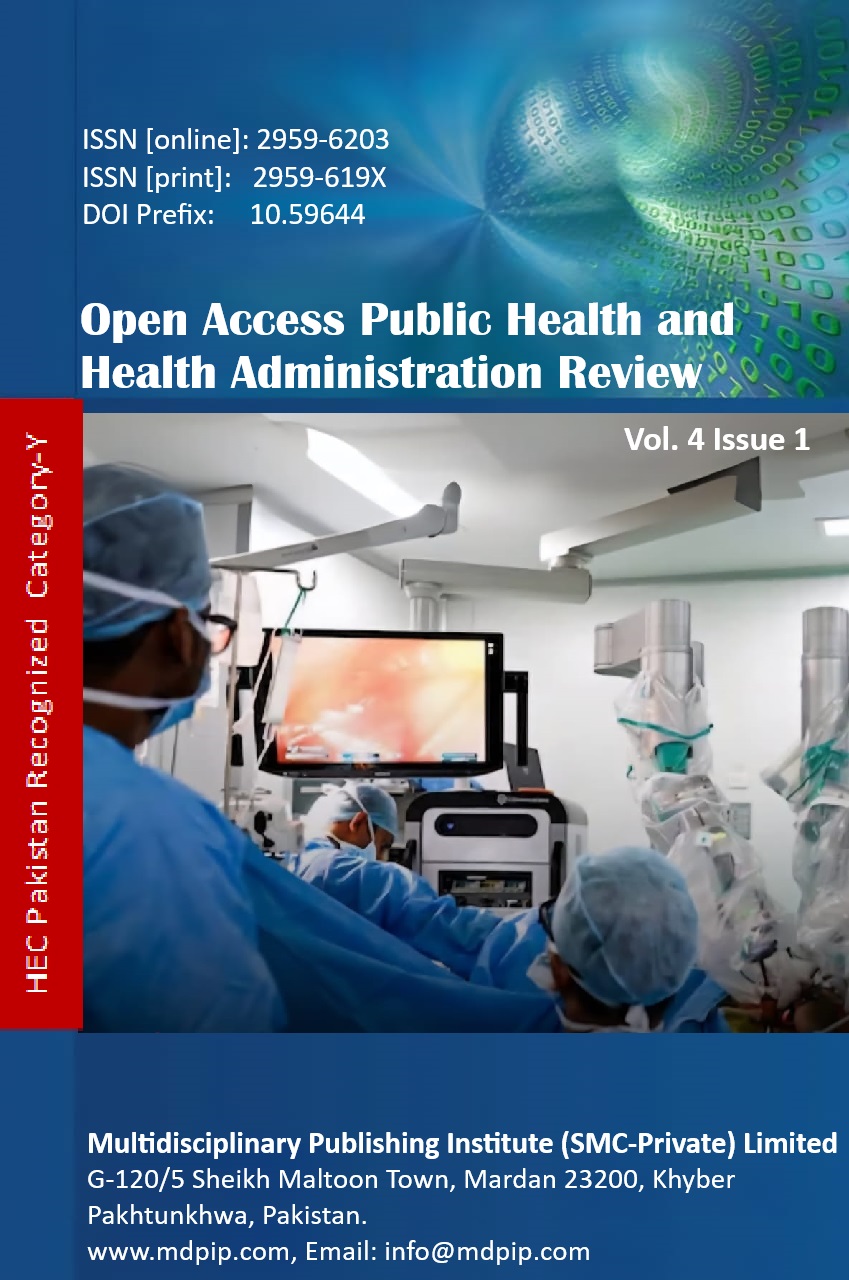Evaluation of Response Variation of Some Species of Mosquitoes to Various Plant Extracts
DOI:
https://doi.org/10.59644/oaphhar.4(1).185Keywords:
Insecticides, Larvicidal Activity, Culex Quinquefasciatus, Eucalyptus Lanceolatus, Aedes AegyptiAbstract
This study aimed to discover the cheapest and non-toxic method to reduce the mosquito population at the larval stage. Several plant extracts were reported as biologically active against insects and pests. For a Larvicidal activity of some plant extracts, leaves of Eucalyptus Lanceolatus, Olea Ferruginea, Melia Azedarach, & Pinus Roxburghii were evaluated against the third and fourth instar larvae of Culex quinquefasciatus and Aedes aegypti by preparing various concentrations of aqueous extract of leaves from selected plants. The concentration of these plants had an ethanolic extraction on Culex quinquefasciatus and Aedes aegypti was 500ppm, 1000ppm, 2000ppm, 3000ppm, 4000ppm, and 5000ppm concentration extract, after 24 hours, ten larvae (III and IV instar stage) were placed in each polyethylene plastic container with test solutions (100ml) at a room temperature of 25 to 30 °C. It has been observed that after 24 hours the percentage of mortality rate against 5000ppm, 4000ppm, 3000ppm, 2000ppm 1000ppm and 500ppm ethanolic extract concentration were recorded for Pinus Roxburghii extract against Culex quinquefasciatus were found the best, it was observed for Larvicidal activity after 24 hours for 5000ppm is 100%, and for 4000ppm the Larvicidal activity were also noted as 100%, Among all the tested plant extracts, the Pinus Roxburghii extract against Culex quinquefasciatus for 5000ppm and 4000ppm were also found the best as the mortality rate is 100% as well as the Eucalyptus Lanceolatus extract against Aedes aegypti were also found the best as the Larvicidal activity has been observed after 24 hours for 5000ppm is 100%, and for 4000ppm, the Larvicidal activity were also recorded as 100%, The mortality depends on time of exposure, plant species and chemical composition.






